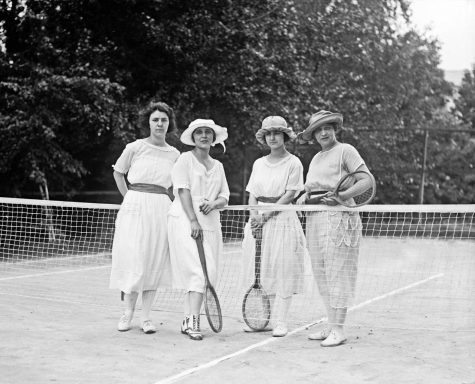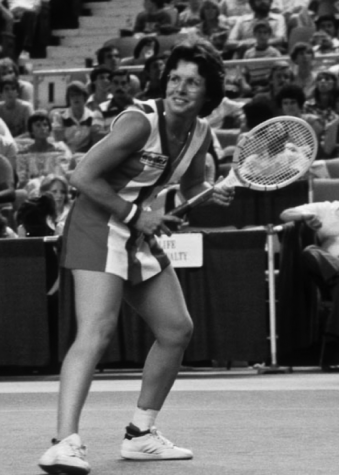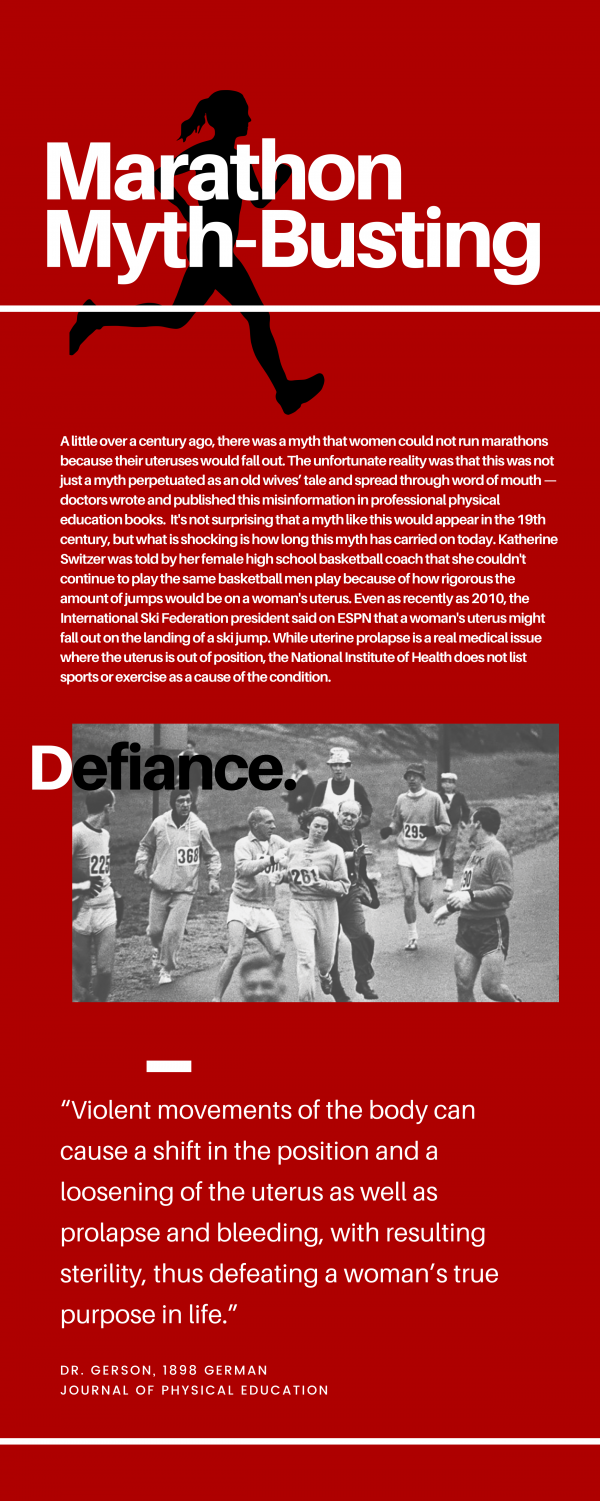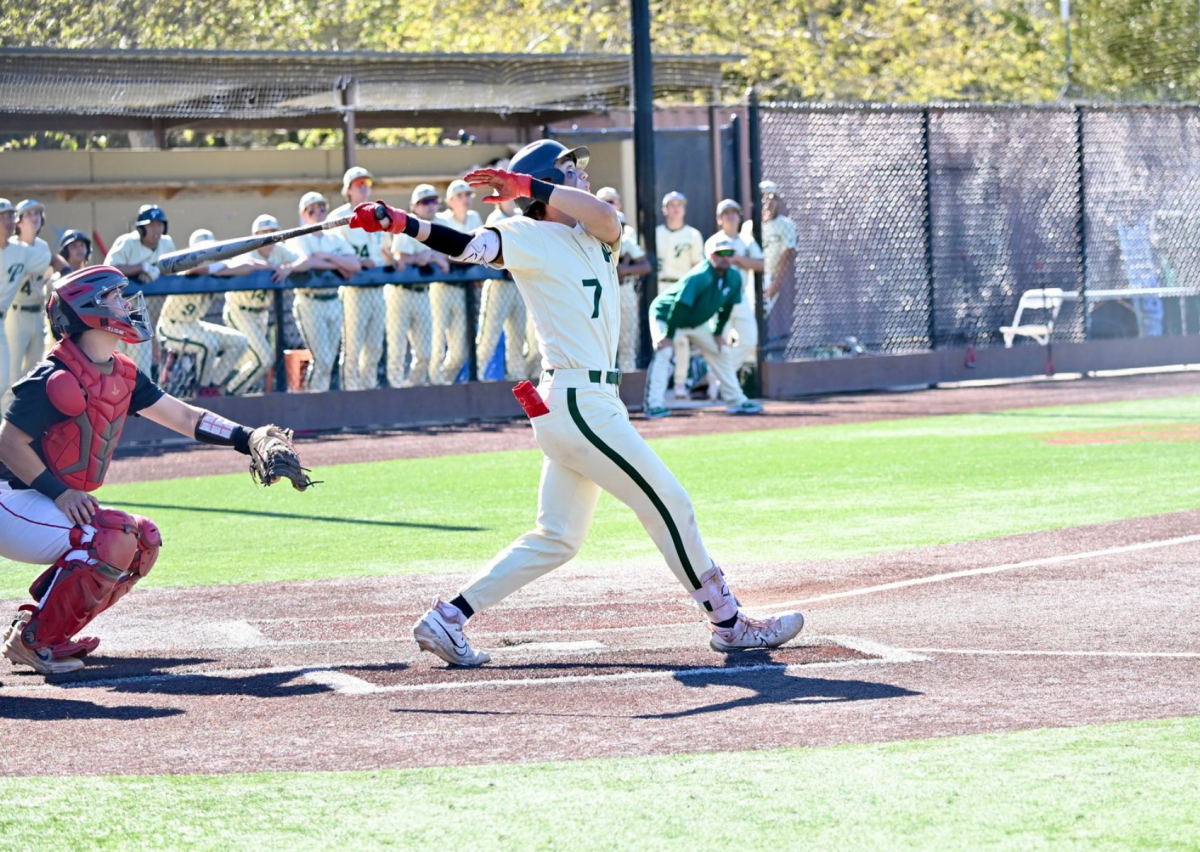Milestones of Change
Over the past century, even in recent decades, women have reached drastic advancements in fighting for their place in the competitive arena. Around the world, there has been an increase in the population of women in sports.
May 21, 2020
Pre-1900s
Sports were considered “unladylike” and there were widespread, irrational fears about how too much exercise would cause women to go infertile.

Certain sports like tennis and croquet were acceptable for elite women because they were considered more leisurely and also required specific outfits, which reaffirmed the femininity of the activity.
1900
Women’s athletics were featured in the Olympic Games for the first time during the 1900 Paris Olympics — nearly three centuries after the first modern versions of the Olympic tournament had taken place. Twenty-two women out of 997 athletes participated, in tennis, horse-riding, croquet, sailing, and golf. More and more events were made available to women in the following years.
1943

During the Great Depression and when the US joined WWII, gender roles shifted to accommodate for the amount of work women had to take on. Women participated more in domestic labor during the Great Depression, and took over job industries during the war. With the suffragette movement and the increased female workforce, society started to view women as more capable and strong, and it became acceptable to support women’s sports. The first professional women’s baseball league, the All-American Girls Baseball League, was formed to keep baseball in the public eye while male players were off fighting. It remained active through 1954 and had over 600 members at its peak.
1948
Alice Coachman became the first black woman to win an Olympic gold, setting records with her high jump at the 1948 London Olympics. She trained at the all-black Tuskegee Institute (now Tuskegee University), which founded the first women’s track team in 1929. After her Olympic success, she went on to support young athletes and older, retired Olympic veterans through the Alice Coachman Track and Field Foundation.
1967
Katherine Switzer became the first woman to run the Boston Marathon. Race officials and viewers tried to physically remove her, but she finished the race. Women weren’t officially allowed to participate in the marathon until Title IX passed.
1972

The Title IX law was enacted in 1973, and it prohibited federally funded institutions from discriminating against individuals on the basis of sex. Now, for the first time, athletic departments were required to provide the same resources to both men and women’s sports teams. “No person in the United States shall, on the basis of sex, be excluded from participation in, be denied the benefits of, or be subjected to discrimination under any education program or activity receiving Federal financial assistance.”
1973
In the most watched televised sports match of all time known as the “The Battle of the Sexes,” Billie Jean King faced Bobby Riggs in a tennis match that sparked a movement for women’s equality in sports. Despite being a well-known top tennis player, in the later years of his life Riggs was notorious for undermining women tennis players by claiming that he could still beat them in a match. In 1973, a 55-year-old Riggs challenged top tennis player and women’s sports equality advocate Billie Jean King to a match. King was ultimately victorious in the match, beating Riggs 6-4, 6-3, 6-3 and winning $100,000 in prize money. Her win became a stepping stone for women’s equality in sports, encouraging new female athletes and empowering women to advocate for equal pay in the workforce. Billie Jean King’s accomplishment was more than one tennis match — she helped launch the women’s equality movement in sports. Her impact on women’s sports is still evident today and empowers female athletes for generations to come.
1991
The International Olympic Committee made a historic decision concluding that any new sport seeking to be included on the Olympic program had to include women’s events. Unfortunately, there were still a lot of previously entered events not open to women’s participation that this law didn’t change, and for the next two decades until boxing was opened to women in 2012, women still had to fight for entry into certain events.
1991
The first Women’s World Cup was held in Italy in 1970, but at the time, many countries had still not allowed women’s sports, so it was considered unofficial. Women believed that it was unfair that they were unable to have an official World Cup, so they wanted better effort from the FIFA Congress in promoting women’s soccer. After 45,000 people attended the first women’s invitational tournament in China in 1988, women’s soccer was seen as a “real” sport, and the official FIFA Women’s World Cup was held in 1991, with twelve teams participating.
2012
At the Olympic games in London, all countries participating sent female athletes for the first time. The US also sent more women than men. Qatar and Brunei sent women from their countries for the first time. The presence of women sent from over 200 countries was a big event that marked a change in women’s sports. Before the 1984 Los Angeles Olympic Games women were not even allowed to run a marathon. With over 40% of the 10,500 participants being female, the 2012 Olympic Games were a huge success for women. Janice Forsyth, director for Olympic Studies, said “we need to celebrate and recognize” these such advances.





